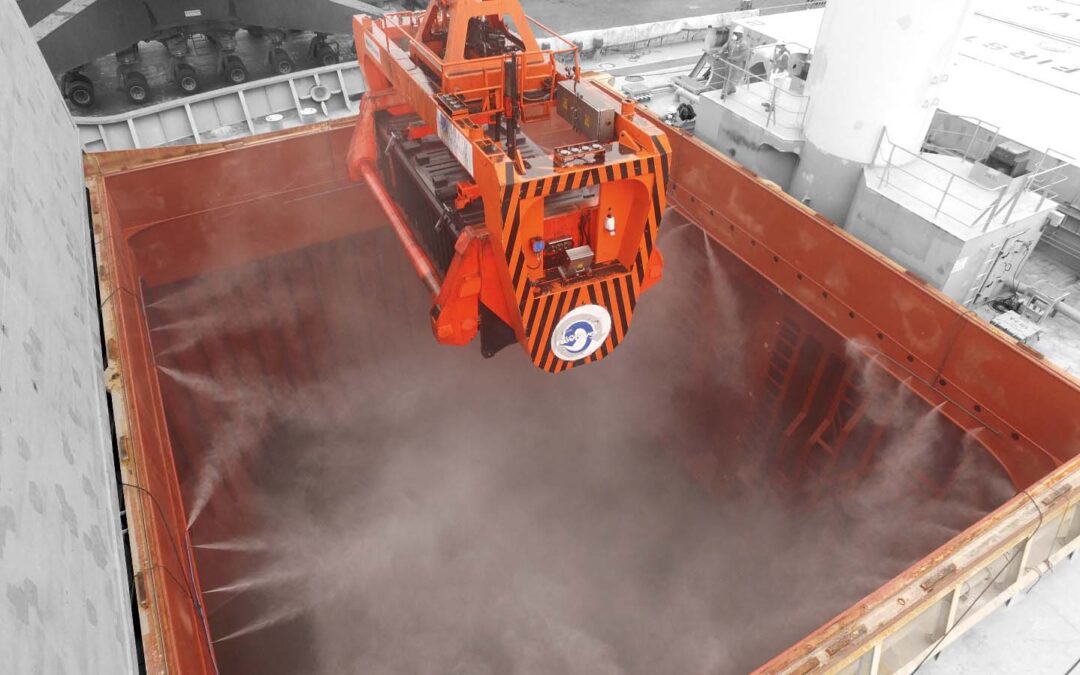More than a decade ago, the first Containerised Bulk Handling (CBH) operation from RAM was introduced to a port in Western Australia. Since then, CBH has gained widespread popularity and can be seen at various bulk ports, container terminals and handling facilities. This article explores how CBH reduces dust emissions throughout the bulk handling process.
Local Community Concerns over Dust Pollution
When the Australian port first started to handle bulk materials, there was opposition from local businesses and residents due to the health concerns that could arise from dust pollution. Local businesses were voicing their concern about copper concentrate being unloaded with the hope of stopping the operation before it begins. But the local businesses were unaware that the operation had already begun months before their protest, which is a testament to the sustainability of containerised bulk handling system.
Those exposed to harmful airborne pollutants can develop respiratory diseases, so it was only fair for the local community around the port to be cautious about handling bulk materials.
How is Dust Generated with Traditional Bulk Handling?
When using traditional bulk handling methods, dust is generated when energy is added to the material, and this happens at numerous points in the handling process. Often, bulk is unloaded and reloaded at different transfer points, leading to dust generation.
Examples of dust generation include:
- Wind shear on bulk piles
- Open top wagons
- Transfer points
- Unloading from conveyor systems
- Unloading from a grab or dump truck
Dust generation is not the only consequence of conventional bulk handling, as bulk materials could be lost or jeopardised during the process. This could be a substantial financial loss to the producer or end user.
Benefits of Containerised Bulk Handling
Containerised Bulk Handling (CBH) is a flexible bulk handling system used for exporting bulk from pit-to-ship or shed-to-ship operations to importing bulk by ship-to-hopper operations. However, the essence is that the commodity never sees the light of day until it is unloaded at its destination. As the bulk material is sealed shut in containers, no energy is added to the materials, and dust cannot be generated during transportation, transfer points or when stockpiled for the arrival of the bulk vessel. This means no material is lost or jeopardised, protecting the customer’s financial interest.
RAM Revolver: The Key Component of CBH
When the commodities reach their final destination, the Revolver picks up the container and removes the lid before rotating the container 360 degrees to ensure all commodities are decanted.
Dust Suppression System: Enhancing CBH’s Dust Reduction Capability
RAM customers can also add a ‘dust suppression system’ to further reduce dust generation during unloading. The ‘water-based’ dust suppression system fitted around the hatch of the bulk vessel creates a dry fog mist over the ship’s hatch during the unloading of the bulk by RAM Revolver. As the dust plume rises, the spray prevents it from leaving the hatch.
The Success of RAM CBH Continues To Grow
Introduced a decade ago, the CBH solution earned two awards and is now utilised in over 30 projects worldwide. RAM Spreaders has successfully implemented the Revolver on various types of cranes, including reach stackers, ship-to-shore cranes, mobile harbour cranes, ship cranes, and bridge cranes. This efficient and sustainable handling of bulk materials has proved successful in each operation.
Frequently Asked Questions
What are the traditional methods that generate dust during bulk handling?
Dust is generated in traditional bulk handling methods through processes like wind shear on bulk piles, unloading from conveyor systems, using open-top wagons, transfer points, and unloading from grab or dump trucks.
What additional feature contributes to dust reduction during unloading in CBH?
The ‘dust suppression system’ further reduces dust generation during unloading by employing a water-based mist around the bulk vessel’s hatch, preventing dust plumes from escaping during unloading. Request a callback to learn more about the dust suppression system.
Can CBH be used for both exporting and importing bulk materials?
Yes, CBH is versatile and can be used for both exporting bulk from pit-to-ship or shed-to-ship operations and importing bulk through ship-to-hopper operations and more. Containerised bulk handling is flexible and can adapt to numerous operation types, want to learn more? Request a callback.

